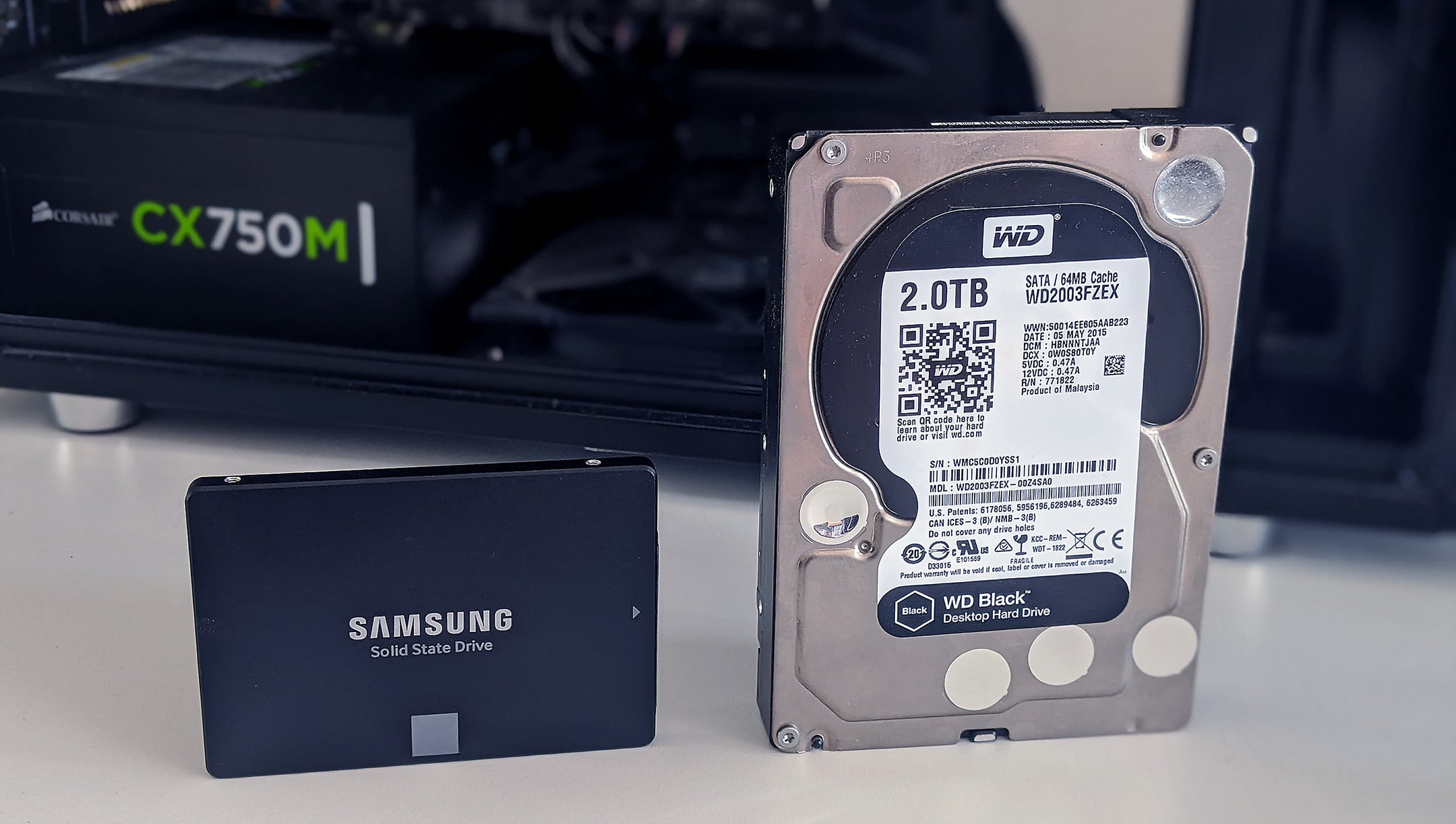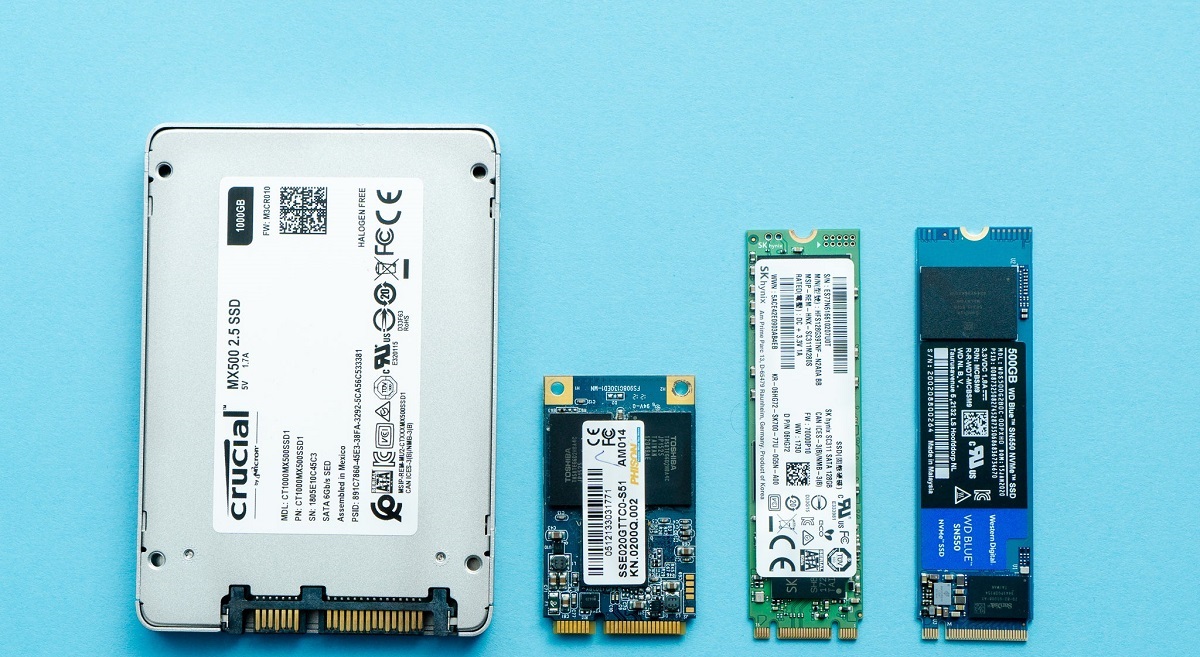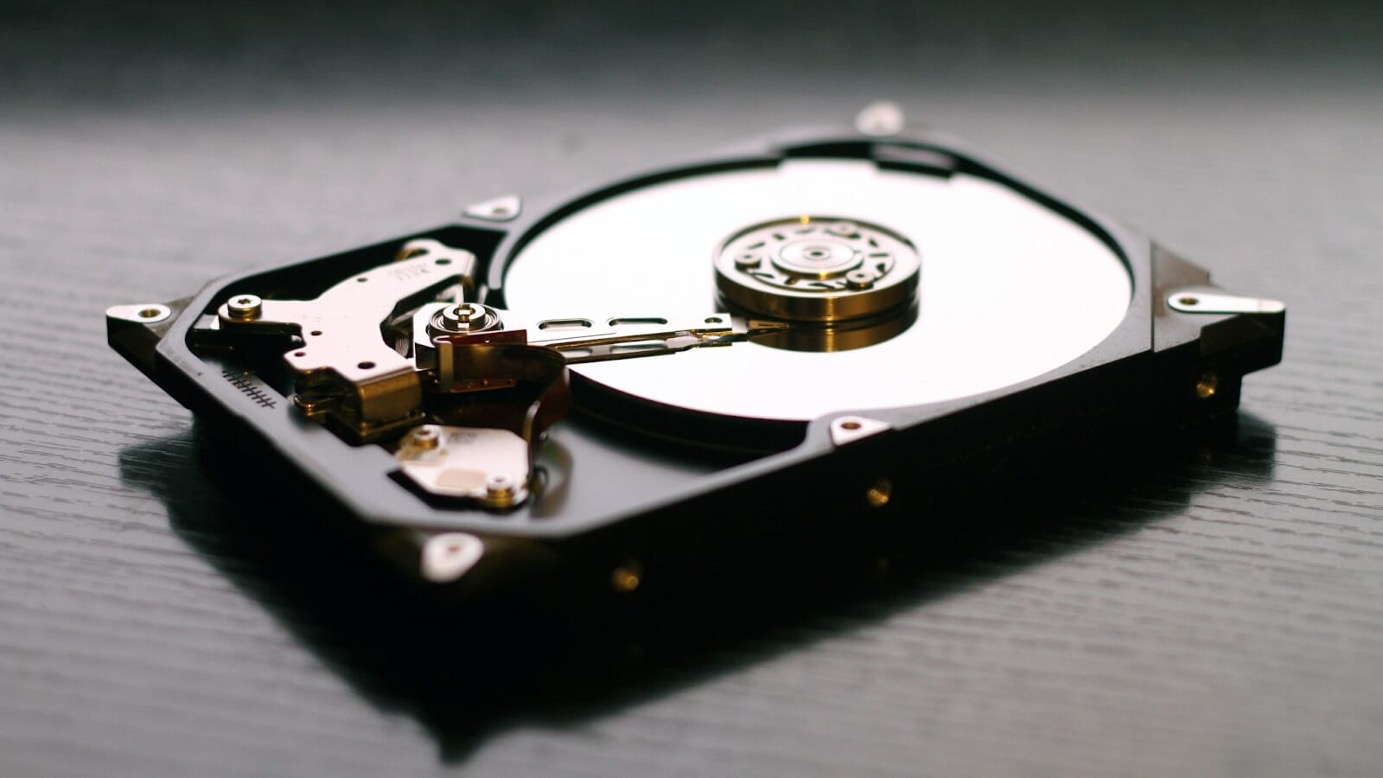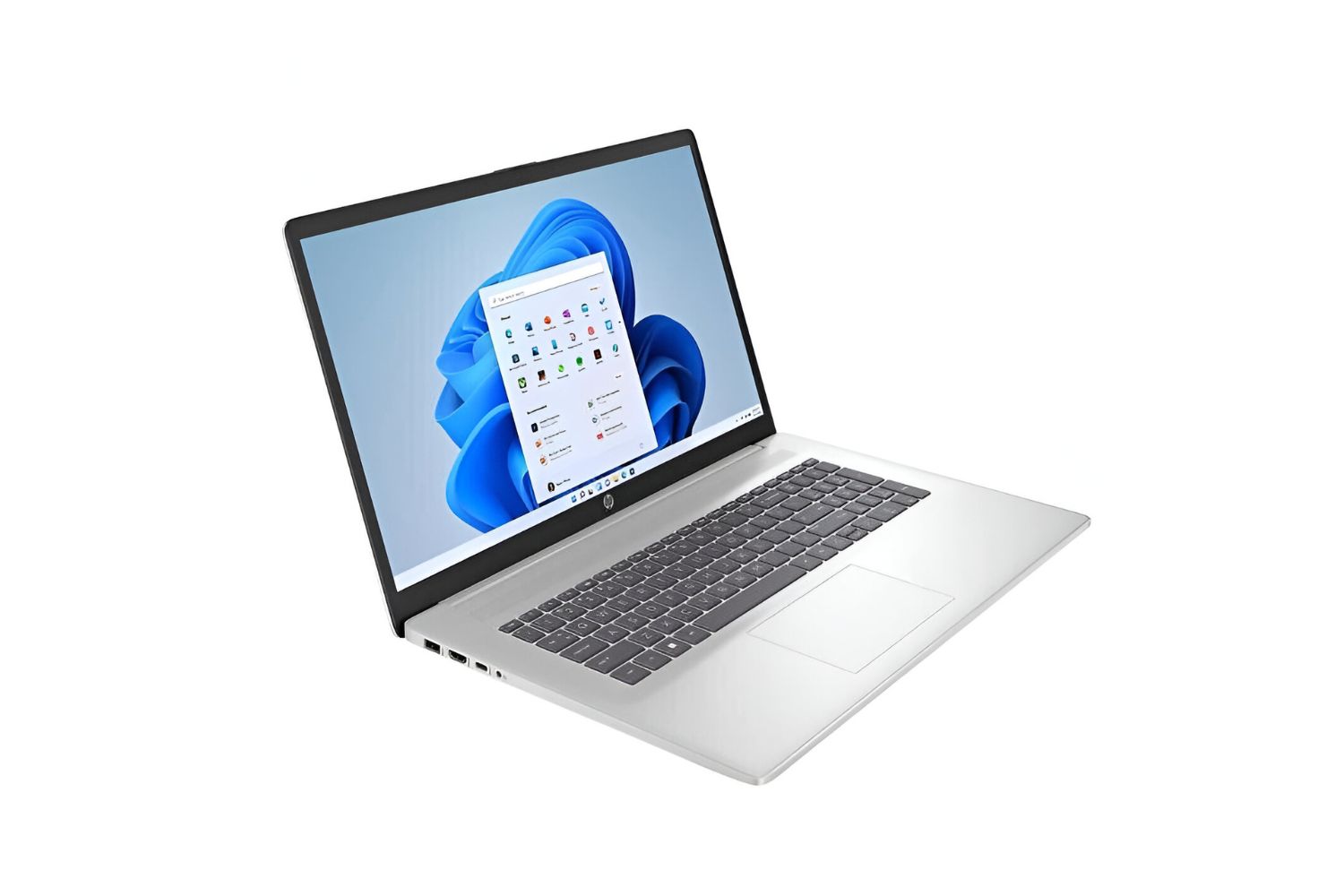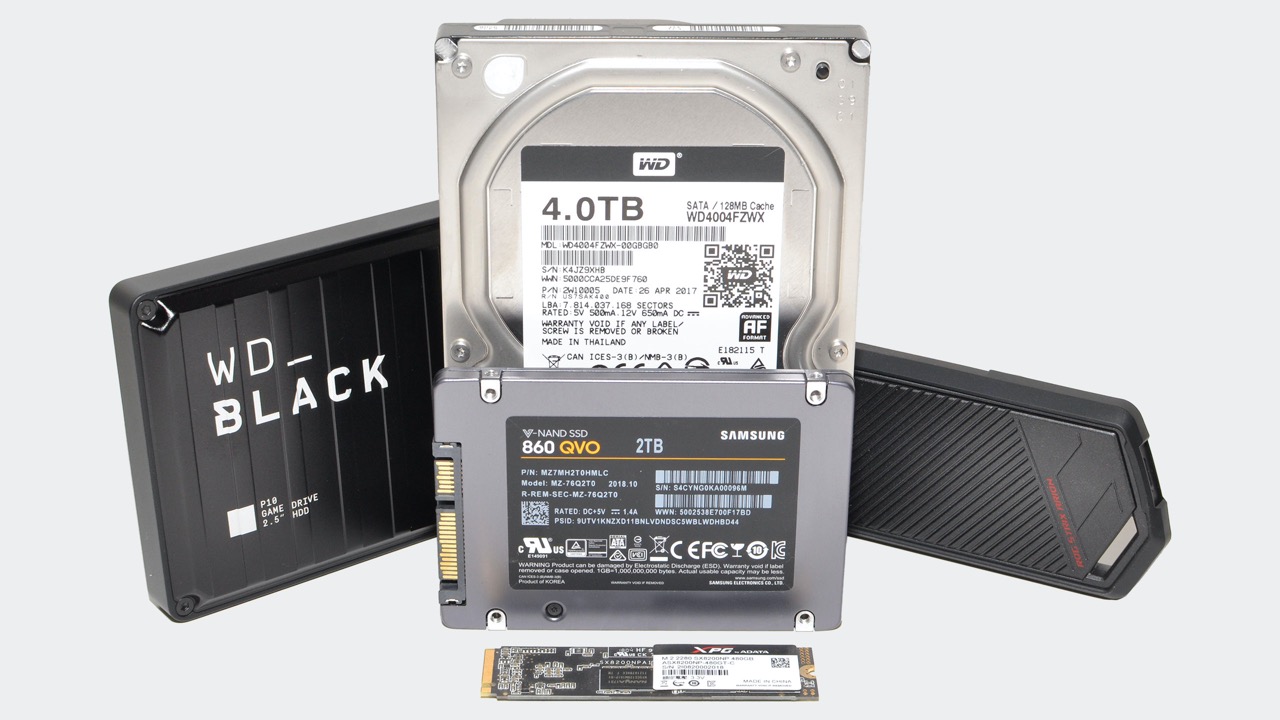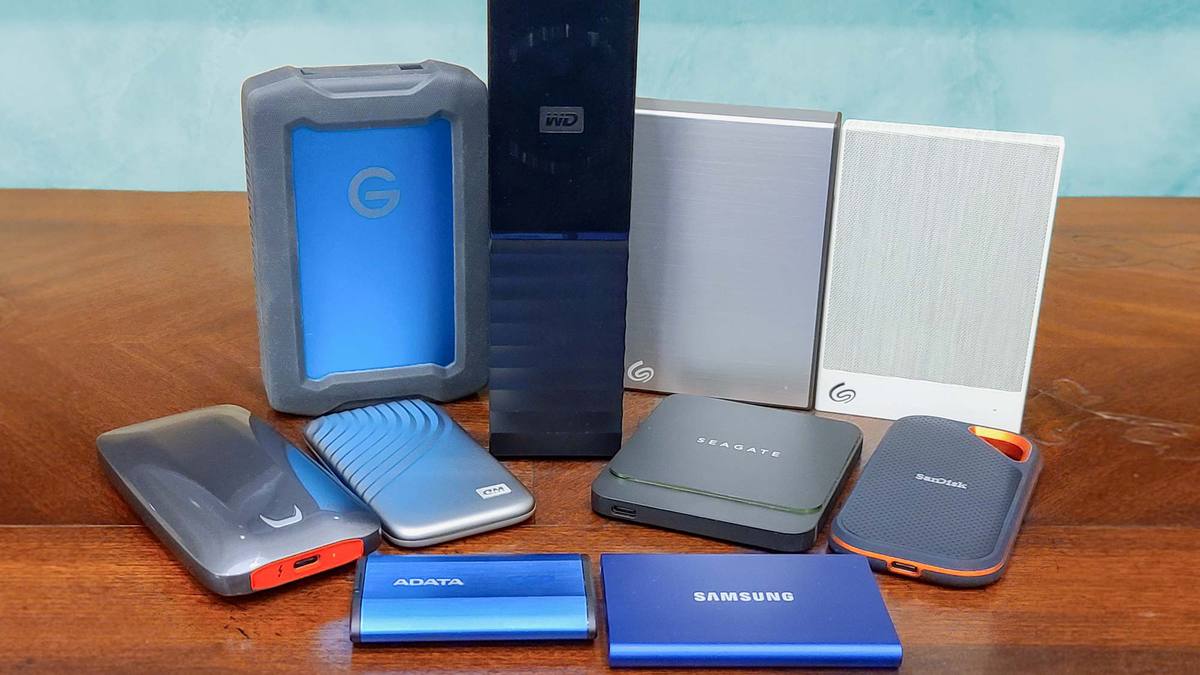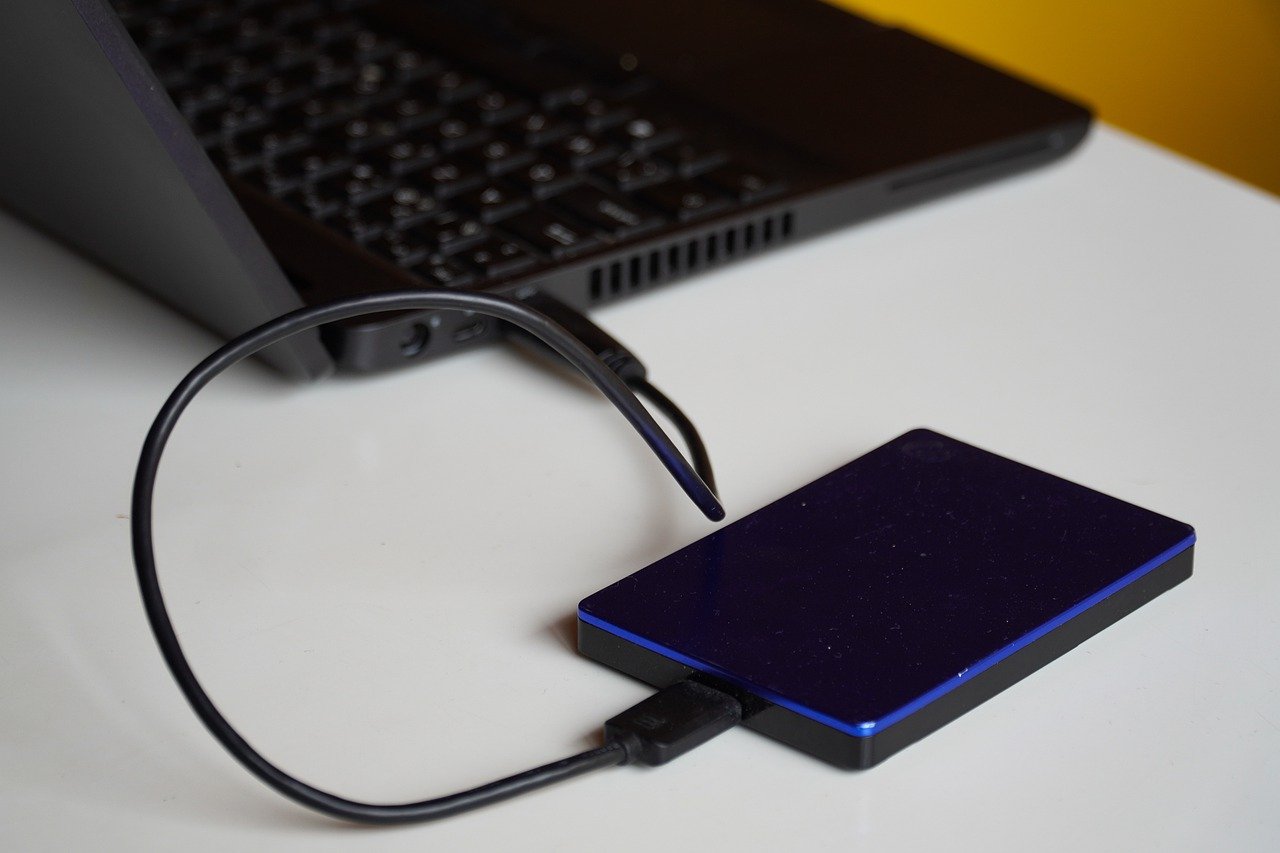Introduction
When it comes to choosing the right storage option for your computer or laptop, there is often a debate between solid state drives (SSD) and hard disk drives (HDD). Both options have their advantages and limitations, which can make the decision-making process a bit confusing.
So, which is better: a 256GB solid state drive or a 1TB 5400 RPM hard drive? To answer this question, we need to understand the difference between these two storage devices and how they affect the overall performance and user experience.
A solid state drive, or SSD, is a type of storage device that uses flash memory to store data. Unlike traditional hard disk drives that rely on spinning platters and mechanical read/write heads, SSDs have no moving parts. This makes them incredibly fast and reliable, offering significantly improved speed and performance compared to HDDs.
On the other hand, a 5400 RPM hard drive is a mechanical disk-based storage device that utilizes rotating platters and read/write heads to access and store data. While HDDs are generally slower than SSDs, they have the advantage of providing larger storage capacities at a more affordable price.
With this basic understanding of SSDs and HDDs, let’s explore the key factors to consider when comparing a 256GB SSD and a 1TB 5400 RPM hard drive. We will analyze the storage capacity, speed and performance, durability and reliability, power consumption, and price to determine which one suits your needs best.
What is a Solid State Drive?
A solid state drive, commonly known as an SSD, is a type of storage device used in computers and laptops. Unlike traditional hard disk drives (HDDs) that rely on spinning disks and moving parts to store and access data, SSDs use flash memory technology.
Flash memory is a type of non-volatile storage medium that retains data even when power is disconnected. It is known for its speed, reliability, and durability, making it an ideal choice for modern computing needs.
SSDs are composed of memory chips known as NAND cells, which store data in a transistor-like structure. These cells are organized into a grid called a “block”, and multiple blocks make up the SSD’s storage capacity.
One of the key benefits of SSDs is their incredible speed. Unlike HDDs, which require time for the spinning platters and read/write heads to access data, SSDs have no moving parts. This allows for near-instantaneous data retrieval, resulting in faster boot times, quicker application launches, and reduced file transfer times.
Additionally, SSDs offer improved durability and reliability compared to HDDs. Since there are no moving parts, there is less risk of mechanical failure or damage due to shock or vibration. This makes SSDs more resistant to physical wear and tear, ensuring your data remains safe and accessible.
Furthermore, SSDs are known for their lower power consumption. Without the need for mechanical components, SSDs require less energy to operate. This not only results in longer battery life for laptops but also reduces the overall heat generated by the drive, contributing to a cooler and quieter computing experience.
However, one limitation of SSDs is their relatively higher cost per gigabyte compared to HDDs. This has been a significant factor in the adoption of SSDs, especially for users who require large storage capacities at an affordable price.
In summary, solid state drives provide fast, reliable, and energy-efficient storage solutions. Their lack of moving parts leads to improved speed, durability, and power consumption, making them an excellent choice for users seeking enhanced performance and reliability.
What is a 5400 RPM Hard Drive?
A 5400 RPM hard drive, also known as a mechanical hard disk drive (HDD), is a traditional storage device commonly used in computers and laptops. Unlike solid state drives (SSDs) that use flash memory, HDDs rely on spinning platters and mechanical read/write heads to store and retrieve data.
The term “5400 RPM” refers to the rotational speed of the hard drive’s platters, measured in revolutions per minute. These platters are coated with a magnetic material, and the read/write heads use magnetism to read and write data on the spinning disks.
One of the advantages of 5400 RPM hard drives is their larger storage capacity compared to SSDs. HDDs can offer terabytes (TB) of storage space, making them ideal for users who require ample room to store large files, multimedia content, and extensive software libraries.
Another benefit of 5400 RPM hard drives is their relatively lower cost per gigabyte compared to SSDs. If you require a large amount of storage without breaking the bank, an HDD might be the more budget-friendly option.
However, the trade-off for increased storage capacity and affordability is slower performance. In terms of speed, 5400 RPM hard drives are generally slower compared to SSDs. The read/write heads need time to physically move across the spinning platters to access data, resulting in longer boot times, slower application launches, and longer file transfer speeds.
Furthermore, mechanical hard drives are more prone to failure and damage due to their reliance on moving parts. The spinning platters and read/write heads can be vulnerable to mechanical issues, such as head crashes or spindle motor failures. This means that data stored on an HDD may be at a slightly higher risk of being lost or corrupted compared to an SSD.
Despite these limitations, a 5400 RPM hard drive is still a viable choice for users who prioritize storage capacity and budget-friendliness over speed and performance. They are widely used in many devices, including desktop computers, gaming consoles, and external storage solutions.
In summary, a 5400 RPM hard drive is a mechanical storage device that offers larger storage capacities at a more affordable price compared to SSDs. However, they are slower, less durable, and more prone to mechanical failure than solid state drives. The decision between an HDD and SSD ultimately depends on your specific needs and priorities.
Storage Capacity: 256GB vs 1TB
Storage capacity is an essential factor to consider when comparing a 256GB solid state drive (SSD) and a 1TB 5400 RPM hard drive (HDD). The capacity of a storage device determines how much data it can hold, including operating systems, software, media files, documents, and personal files.
A 256GB SSD provides a decent amount of storage for average users. It can accommodate an operating system, a selection of software applications, and a moderate collection of media files. This capacity is suitable for individuals who primarily use their computers for web browsing, document creation, and light media consumption.
On the other hand, a 1TB (terabyte) 5400 RPM hard drive offers substantially more storage space. With four times the capacity of a 256GB SSD, it allows users to store a larger number of software applications, extensive media libraries, and a significant amount of personal files and documents. This makes it more suitable for power users, content creators, or individuals who work with large files, such as video editors or graphic designers.
However, it is important to note that the actual usable capacity of a storage device can be slightly less due to formatting and system files. Both SSDs and HDDs reserve a portion of their capacity for system overhead and maintenance purposes. As a result, the usable capacity might be slightly lower than the advertised capacity.
Ultimately, the choice between a 256GB SSD and a 1TB HDD depends on your specific needs and usage patterns. If you prioritize speed, durability, and a moderate amount of storage, the 256GB SSD might be sufficient. It offers faster performance and quicker access to data, which can be beneficial for tasks that require high-speed data processing.
On the other hand, if you have a large amount of data to store, such as extensive multimedia collections or work-related files, the 1TB HDD would provide ample storage space at a lower cost per gigabyte. While slower in terms of data transfer speed, the larger capacity allows for more flexibility in storing and organizing your files without the need for external storage solutions.
In summary, the storage capacity is an important consideration when comparing a 256GB SSD and a 1TB 5400 RPM HDD. The choice depends on your storage needs, usage patterns, and budget. If you require more storage space and are willing to compromise on speed, the 1TB HDD might be the better option. However, if speed and performance are crucial, and you can manage with slightly limited storage capacity, the 256GB SSD would be the more suitable choice.
Speed and Performance: SSD vs HDD
When comparing the speed and performance of a solid state drive (SSD) and a 5400 RPM hard disk drive (HDD), there is a clear distinction between the two storage technologies.
SSDs are known for their exceptional speed and responsiveness. Since they have no moving parts, data access is near-instantaneous. The lack of physical limitations allows for fast boot times, quick application launches, and rapid file transfers. Tasks such as opening large files, running resource-intensive software, and multitasking are significantly faster with an SSD.
On the other hand, 5400 RPM HDDs have mechanical components that limit their speed. The spinning platters and the moving read/write heads need time to reach the specific location of the data, resulting in slower access times. Booting up the system, loading applications, and transferring files take more time compared to an SSD.
When it comes to overall system performance, an SSD can greatly enhance the user experience. With faster read and write speeds, the operating system and software applications respond almost instantaneously, leading to a smoother and more efficient workflow. Additionally, SSDs excel in random access tasks, meaning they can retrieve data from different locations simultaneously, which further improves multitasking capabilities.
Although HDDs offer larger storage capacities at a more affordable price, their slower speed can lead to a noticeable lag in performance. Tasks that involve a significant amount of read and write operations, such as video editing or running virtual machines, can be considerably slower on an HDD compared to an SSD.
Furthermore, SSDs are not only faster in terms of data access but also perform better in terms of durability and reliability. Since SSDs have no mechanical components, they are less prone to physical damage caused by drops or vibrations. This makes them more durable and reliable than HDDs, reducing the risk of data loss due to mechanical failure.
In summary, when it comes to speed and performance, solid state drives (SSDs) outshine 5400 RPM hard disk drives (HDDs). The lack of moving parts in SSDs allows for faster access times, quicker system performance, and improved multitasking capabilities. While HDDs offer larger storage capacities at a lower cost, their slower speed can result in slower boot times, application launches, and file transfers.
Durability and Reliability: SSD vs HDD
When comparing the durability and reliability of solid state drives (SSDs) and 5400 RPM hard disk drives (HDDs), it is evident that their design and construction play a significant role in determining their resilience and dependability.
SSDs have a distinct advantage in terms of durability and reliability. Since they have no moving parts, there is less risk of mechanical failure caused by physical shocks, vibrations, or drops. This makes SSDs more resistant to accidental damage, making them a suitable choice for portable devices like laptops. Additionally, the absence of moving parts reduces the likelihood of wear and tear over time, resulting in a longer lifespan and sustained performance.
HDDs, on the other hand, rely on spinning platters and moving read/write heads to access and store data. These mechanical components make them more susceptible to damage. Even a slight drop or jolt can lead to the misalignment of the read/write heads or damage to the platters, causing data loss or system failure. While HDDs are generally reliable under normal usage conditions, their mechanical nature increases the risk of failure over time.
In terms of data integrity, both SSDs and HDDs utilize error correction algorithms and other mechanisms to protect against data loss or corruption. However, SSDs have a slight advantage due to their ability to mark failed or unreliable memory cells as “bad” and redirect data to healthy ones. This proactive approach helps to maintain data integrity and minimize the risk of data loss.
It’s worth noting that while SSDs are generally more reliable than HDDs, they can still experience failures. In rare cases, a power outage or sudden loss of power can result in data corruption or loss. To mitigate this risk, SSDs often include built-in power loss protection mechanisms that ensure data is safely written to the drive even in the event of a power interruption.
When it comes to system performance, SSDs’ reliability translates to consistent speed and responsiveness, as their lack of moving parts minimizes the potential for mechanical failures that could lead to decreased performance. HDDs, on the other hand, may experience degraded performance over time as the mechanical components wear out.
In summary, solid state drives (SSDs) are generally more durable and reliable than 5400 RPM hard disk drives (HDDs). The absence of moving parts in SSDs reduces the risk of mechanical failure and physical damage, resulting in increased resilience and a longer lifespan. Additionally, SSDs employ techniques to maintain data integrity, making them a safer storage option overall.
Power Consumption: SSD vs HDD
When comparing the power consumption of solid state drives (SSDs) and 5400 RPM hard disk drives (HDDs), it is evident that SSDs are more energy-efficient.
SSDs consume significantly less power compared to HDDs due to their design and lack of mechanical components. Since SSDs rely on flash memory to store and access data, they do not require mechanical movements or spinning platters to operate. As a result, SSDs consume less power during both idle and active states, making them ideal for portable devices such as laptops and tablets that rely on battery power.
HDDs, on the other hand, require more power to operate due to their mechanical nature. The spinning platters and moving read/write heads consume a substantial amount of power. Additionally, the initial spin-up of the platters consumes even more power, adding to the overall power consumption of the drive.
The lower power consumption of SSDs not only benefits portable devices but also has a positive impact on desktop computers and server environments. With less power consumed by storage devices, a system’s overall power requirements can be reduced, leading to lower electricity costs and a smaller environmental footprint.
Furthermore, the lower power consumption of SSDs translates to reduced heat generation. The absence of mechanical components results in less heat dissipation, leading to cooler operating temperatures within the system. This not only enhances system stability but also contributes to a quieter computing experience, as there is less need for active cooling solutions like fans.
It is important to note that while SSDs generally consume less power than HDDs, the power consumption can vary based on the specific model and usage patterns. SSDs can consume more power during intensive read and write operations or when using advanced features like hardware encryption. However, even in such scenarios, the power consumption of an SSD is typically lower compared to an HDD performing similar tasks.
In summary, solid state drives (SSDs) have a distinct advantage over 5400 RPM hard disk drives (HDDs) when it comes to power consumption. SSDs consume less power overall due to their lack of mechanical parts, resulting in longer battery life for portable devices and reduced electricity costs for desktop computers and server environments. Additionally, the lower power consumption contributes to lower heat generation, leading to improved system stability and a quieter computing experience.
Price Comparison: SSD vs HDD
Price is an important consideration when evaluating storage options, and there are significant differences in cost between solid state drives (SSDs) and 5400 RPM hard disk drives (HDDs).
SSDs tend to be more expensive than HDDs on a per-gigabyte basis. This is primarily due to the higher manufacturing costs associated with the flash memory technology used in SSDs. The cost of producing reliable and high-performance flash memory chips adds to the overall price of SSDs.
On the other hand, HDDs offer larger storage capacities at a more affordable price. The mechanical design and use of traditional magnetic storage technology allow HDD manufacturers to produce drives with terabytes of storage space at a lower cost per gigabyte. This makes HDDs an attractive option for users who require extensive storage capacity without breaking the bank.
However, it is worth noting that the price gap between SSDs and HDDs has been narrowing in recent years. Technological advancements and increased demand for SSDs have led to improvements in production processes and economies of scale, resulting in more competitive pricing.
While SSDs are generally more expensive initially, they can offer long-term cost savings. Their lower power consumption translates to reduced electricity bills, especially for devices that run on battery power. Additionally, SSDs require less maintenance and have higher resistance to physical damage, reducing the need for costly data recovery services or drive replacements.
Ultimately, the choice between SSDs and HDDs based on price depends on your specific needs and budget. If you prioritize fast performance, durability, and reliability, SSDs may be worth the higher investment. On the other hand, if you require large storage capacities at a more affordable price, HDDs are a cost-effective solution.
It’s also worth considering hybrid drives, which combine elements of both SSDs and HDDs in a single device. These drives offer a compromise between performance and storage capacity, with a smaller SSD portion serving as a cache for frequently accessed data, while the bulk of data is stored on the mechanical HDD. Hybrid drives provide a balance between speed and cost, making them a viable option for some users.
In summary, SSDs are generally more expensive than HDDs on a per-gigabyte basis but offer faster performance, durability, and energy efficiency. HDDs, on the other hand, provide larger storage capacities at a more affordable price. The choice between SSDs and HDDs ultimately depends on your specific needs, budget, and the importance you place on speed, durability, and storage capacity.
Which One Should You Choose?
Choosing between a solid state drive (SSD) and a 5400 RPM hard disk drive (HDD) depends on several factors. Your specific needs, usage patterns, budget, and priorities will ultimately determine which option is the most suitable for you.
If speed and performance are paramount to you, an SSD is the clear choice. SSDs offer faster data access, quicker boot times, and improved overall system responsiveness. They excel in tasks that require high-speed data processing, such as running resource-intensive software or multitasking. Additionally, SSDs have no mechanical parts, making them more durable and reliable than HDDs.
If you require a large amount of storage capacity at an affordable price, an HDD may be the more suitable choice. HDDs offer larger storage capacities at a lower cost per gigabyte. This makes them a practical option for users who need ample space for large files, media collections, or extensive software libraries.
For users who value a balance between speed and storage capacity, hybrid drives can be a viable option. These drives combine SSD and HDD technologies in a single device, with the SSD portion serving as a cache for frequently accessed data. Hybrid drives offer a compromise between speed and cost-effectiveness.
Consider your budget when making a decision. SSDs tend to be more expensive initially, but their long-term cost savings come from their energy efficiency and reduced maintenance needs. HDDs are generally more affordable, making them a budget-friendly choice for those who need extensive storage.
Portability is another aspect to consider, particularly for laptops and portable devices. If you prioritize durability and resistance to physical damage, SSDs are the better option. Their lack of mechanical parts makes them less prone to failure due to shocks, drops, or vibrations.
Ultimately, the choice between an SSD and an HDD depends on your specific requirements and how you prioritize speed, storage capacity, durability, and budget. Consider your usage patterns, the type of tasks you perform, and the importance of data access speed and long-term reliability. Assessing these factors will help you determine the most appropriate storage option for your needs.
Conclusion
Choosing between a solid state drive (SSD) and a 5400 RPM hard disk drive (HDD) can be a challenging decision. Both storage options have their own unique strengths and limitations, and the choice ultimately depends on your specific needs and priorities.
If you prioritize speed, performance, and durability, SSDs are the clear winner. Their lack of moving parts allows for faster data access, quicker boot times, and improved system responsiveness. Additionally, SSDs are more resistant to physical damage and have lower power consumption, making them ideal for portable devices.
On the other hand, if you require extensive storage capacity at a more affordable price, HDDs are the more suitable choice. They offer larger storage capacities with a lower cost per gigabyte, making them advantageous for users with vast multimedia libraries or the need for extensive software installations.
For users looking for a balance between speed and storage capacity, hybrid drives can be a viable compromise. These drives combine the benefits of both SSDs and HDDs, offering faster performance for frequently accessed data and larger storage capacities for less frequently accessed files.
It is important to consider your budget when making a decision. While SSDs often come at a higher initial cost, their long-term cost savings can be realized through energy efficiency and reduced maintenance needs. HDDs, on the other hand, provide a more cost-effective solution for users who require extensive storage without prioritizing speed.
Ultimately, the choice between an SSD and an HDD depends on your specific requirements and usage patterns. Assess factors such as speed, storage capacity, durability, power consumption, and budget to determine which option aligns best with your needs. Whether you choose the lightning-fast performance of an SSD or the generous storage capacity of an HDD, both options have their advantages and will serve you well in different scenarios.







